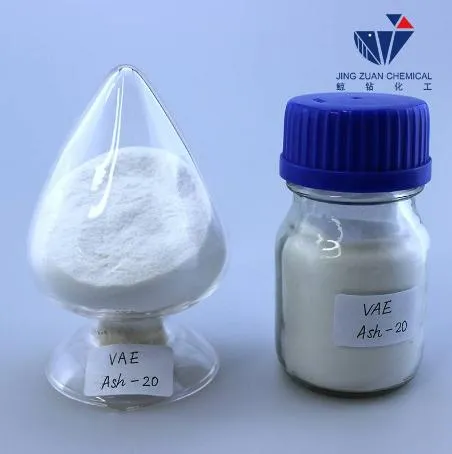
ធ្នូ . 03, 2024 16:29 Back to list
Hydroxypropyl Methylcellulose Powder for Various Applications in Pharmaceuticals and Food Industry
Hydroxypropyl Methylcellulose Powder A Versatile Polymer in Modern Applications
Hydroxypropyl methylcellulose (HPMC) powder is a semi-synthetic polymer derived from cellulose, a natural polymer found in the cell walls of plants. HPMC has become increasingly popular due to its unique properties and versatility, making it an essential ingredient across various industries, including pharmaceuticals, food processing, cosmetics, and construction. This article explores the characteristics, applications, and benefits of HPMC powder, shedding light on its significance in modern manufacturing and formulation processes.
Characteristics of Hydroxypropyl Methylcellulose Powder
HPMC powder is a white, odorless, and tasteless substance. It is soluble in cold water but not in hot water, giving rise to a gel-like solution that exhibits remarkable viscosity. This property is primarily due to the hydroxypropyl and methyl groups introduced during the chemical modification of cellulose. The degree of substitution of these groups influences the solubility and viscosity, allowing manufacturers to tailor HPMC to their specific needs.
Apart from its solubility, HPMC possesses several other characteristics. It is non-ionic, which means it is not affected by the presence of ions in solution, making it a stable choice for various formulations. Additionally, it has excellent film-forming properties, making it suitable for applications where a protective barrier is needed. Another noteworthy characteristic is its biodegradable nature, which aligns with growing environmental concerns, making HPMC a favorable choice for eco-friendly products.
Applications of HPMC Powder
1. Pharmaceutical Industry HPMC is widely used as a binding agent, stabilizer, and thickening agent in pharmaceutical formulations. Its ability to control the release of active ingredients makes it ideal for creating sustained-release tablets and controlled drug delivery systems. Moreover, HPMC is utilized in ophthalmic preparations and as an excipient in capsule formulations due to its non-toxic nature.
2. Food Processing In the food industry, HPMC serves as a thickener, emulsifier, and stabilizer, enhancing the texture and stability of various food products. It is often found in gluten-free baked goods, dairy products, sauces, and dressings, where it helps retain moisture and improves mouthfeel. Furthermore, HPMC is valuable in low-fat food products, where it can mimic the texture of fats, allowing for healthier alternatives without sacrificing taste.
hydroxypropyl methylcellulose powder

3. Cosmetics and Personal Care HPMC is commonly used in cosmetics and personal care products such as shampoos, lotions, and creams. Its thickening and film-forming properties contribute to improved texture and application, while its water-retention capabilities enhance moisturization. HPMC also serves as a stabilizer in emulsions, ensuring a smooth and uniform product.
4. Construction Industry In construction, HPMC is used as an additive in cement, mortar, and tile adhesives. It improves the workability and adhesion properties of these materials, allowing for easier application and better performance. The water retention capability of HPMC helps prevent premature drying, ensuring that the materials cure properly.
Benefits of HPMC Powder
One of the most significant benefits of HPMC powder is its versatility. With applications spanning multiple industries, it can be customized to meet specific formulation requirements. Additionally, its non-toxic and biodegradable nature makes HPMC an environmentally friendly choice.
Another advantage is that it effectively enhances product performance. In pharmaceuticals, HPMC improves drug bioavailability and stability, while in food products, it improves texture and shelf-life. In cosmetics, it helps create luxurious textures that consumers seek.
Moreover, HPMC is generally recognized as safe (GRAS) by the Food and Drug Administration (FDA), which helps ensure that products containing it meet regulatory standards. This recognition further boosts consumer confidence in products formulated with HPMC.
Conclusion
Hydroxypropyl methylcellulose powder is a remarkable polymer with diverse applications across multiple industries. Its unique properties, including solubility, viscosity, and film-forming capabilities, position it as a vital ingredient in pharmaceuticals, food processing, cosmetics, and construction. As industries continue to prioritize sustainability and product performance, HPMC's biodegradable nature and versatility will likely see its use grow even further. Whether it’s in a tablet, a gluten-free cookie, or a high-quality cosmetic cream, HPMC is making a significant impact, demonstrating the power of chemistry in enhancing everyday products.
-
Unlocking the Benefits of HPMC Products: A Gateway to Versatile Applications
NewsAug.07,2025
-
Unleashing the Potential of HPMC Ashland: A Comprehensive Look
NewsAug.07,2025
-
Tile Bonding Cellulose: The Key to Superior Adhesion and Durability
NewsAug.07,2025
-
Hydroxypropyl Methylcellulose Powder: The Versatile Component in Modern Pharmaceuticals
NewsAug.07,2025
-
Hydroxyethyl Cellulose: The Versatile Solution for Various Industries
NewsAug.07,2025
-
Hydroxyethyl Cellulose (HEC): The Versatile Polymer for Various Applications
NewsAug.07,2025







